Compared to music documentaries and reissues that are up my alley, it’s more of a prime age for books. There are many rock history books, and some in related styles that interest me, getting churned out now, some on stars, some on acts and niches that seemed unimaginable to get honored with full-length volumes just a few years ago. There are so many I couldn’t get to them all, with a dozen titles at the least lined up on my list of things to check out that I couldn’t in time for this blogpost. No doubt I’ll become aware of at least a few other 2022 books I haven’t yet found out about. Good ones will be reviewed as the “this came out in 2022” part of my 2023 list, though that’s probably cold comfort to the writers and publishers.
But there are a lot of books on this list, including some in a special section for 2021 releases I didn’t read in time for my 2021 blogpost. Some of them rank as high as they do because of my special interest in the subject matter, such as my #1 and #2 picks. For some others, detailed research into some artists I’m particularly passionate about make up for imperfections in the writing, and I’ll always favor that over immaculate prose for subjects that don’t arouse my curiosity.
A word about those imperfectly written books. There are some comments in the reviews spotlighting mistakes and sloppiness. While those aren’t the main things I look for in reading and reviewing, it seems like more such carelessness is slipping into such books, and not just self-published ones. Sometimes they’re in best-sellers written by famous musicians and music business moguls. Most reviews don’t have the space to point specific ones out, and when I do, it’s a reminder that more care should be taken in getting dates, sequences of events, spellings, and larger issues right.
That’s especially the case considering many such facts can be easily researched, and that knowledgeable writers and fans are available to read the copy and correct errors before they get into print. This is often done for histories of major social movements and politicians, and music history isn’t less important to get right. Fortunately, the majority of books here don’t make numerous obvious slips.
1. The Byrds: 1964-1967, by Roger McGuinn, Chris Hillman & David Crosby (BMG). Even by the standards of coffee table books, this is a literally heavy tome, weighing almost nine pounds. At about $150, it’s also pretty expensive. And it’s a photo book, not a standard narrative one. Still, it ranks pretty high on my list because I’m a big Byrds fan. The photos are really good, and I haven’t seen many of them (some of them outtakes from sessions that generated familiar images, including record covers) before, although I’ve seen many Byrds photos. And the three surviving original Byrds do contribute numerous quotes for the text, done specifically for this book, not taken from archive sources. While there are a few dozen pages at the end about some Byrds reunions, most of this does properly focus on their 1964-1967 prime.
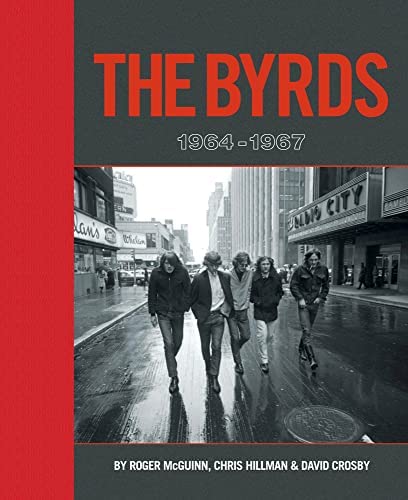
While I always like more text in books like these, their memories are pretty good and entertaining, usually concentrating on the actual pictures and their settings, not so much on their general history (although there’s some of that). Sometimes they admit they don’t remember the photos or the events in which they took place, but at least they don’t pretend to and/or state false memories that are factually inaccurate. The departure of drummer Michael Clark at the end of 1967 should have been explained at least a bit more, but for those who want more of the actual Byrds story, there are Johnny Rogan’s massive Byrds tomes, though those are expensive too.
Here are just a couple deep dives that struck me of interest. Crosby, perhaps unsurprisingly, has some very ungracious things to say about their first co-manager Jim Dickson, and also their first producer, Terry Melcher. He says “Melcher couldn’t produce a Kleenex box. He knew nothing about audio, nothing about recording, nothing about songs, nothing about our band. Knew nothing about anything.” McGuinn, always more diplomatic, is quite complimentary about Melcher, whom he “believe[s] was a big part of the Byrds’ success,” and points out that “Terry didn’t like David’s songs, so he wasn’t putting them on the album. That was the key point that they disagreed on.”
Also, some Barry Feinstein photos make it clear that the great picture sleeve for the “Eight Miles High” single, where Michael Clarke is about to flick a spoon at an oblivious David Crosby’s head, was taken in mid-1965 in Chicago. The book, however, doesn’t include the actual photo from the picture sleeve. Which I would have liked, in part because that might have given McGuinn, Hillman, and Crosby a chance to explain what was happening in that wonderfully goofy photo. It’s a minor missed opportunity, but again, at least they didn’t make up something factually wrong.
And there’s not much memorabilia in the book, but an item of great interest reproduces the unused liner notes publicist Derek Taylor wrote for their second album, Turn! Turn! Turn! These refer, with extreme (by the standards of the day’s notes) candor, to a physical fight between Crosby and Clarke in the studio; to Crosby undermining Clark’s confidence as a guitarist; to McGuinn and Crosby maneuvering to let only three Clark songs on the album; and to Columbia manufacturing 200,000 unused sleeves for a “The Times They Are A-Changin’” single that didn’t come out. And this is from a publicist! These kind of frank insights into a band’s conflicts were rare in any kind of press in the mid-1960s, and certainly unheard of in liner notes. But it’s definitely valuable as a historical document, even if no one should have been surprised that it wasn’t used on the LP’s back cover.
I have more detailed comments about specific parts of the Byrds’ history I found especially interesting in the book in this blogpost.
2. The Beatles 1963: A Year in the Life, by Dafydd Rees (Omnibus Press). Like the Byrds book reviewed above, this day-by-day log of the Beatles’ activities in the 1963 is for the devoted fan, not so much for the general one. With about 500 pages of entries for every day of the year, and many sidebars of eyewitness accounts in tiny print, it might even be for the hardcore fan. I think people who read lists like mine aren’t average casual rock fans, however, so it’s okay to put this pretty high on mine, acknowledging that not everyone’s as big a Beatles devotee as I am. Although this covers just one year, within that frame it’s more detailed than any of the other calendar Beatles books out there. Every gig, radio show, TV appearance, and recording is here, delineated in pretty exacting detail, along with other activities of numerous sorts the group undertook. The growth in one year of the band from an emerging group with a mid-chart debut hit to the biggest entertainment phenomenon the UK had ever seen, with some stirrings of early Beatlemania in the US at the very end of the year, still astonishes. So does the sheer amount of work the group packed into 1963, going all over the British Isles (and for a week to Sweden) and fitting in sessions at EMI, the BBC, and numerous other media obligations almost nonstop, with just a couple vacation breaks.

Although this is well written and very readable, there’s some unavoidable repetition in the nature of the concert accounts, especially in the final months, with show after show of kids lining up hours or days beforehand, hysteria at the event, the difficulty of getting the band in and out of the venues, the inability of the audience to hear the music over the screams, and so forth. These are still spiced up with some unusual stories, including from many youngsters who were there at these events. Better, however, are a good number of eyewitness accounts and memories from notable peers, including members of the Searchers and the Fourmost; Rod Argent of the Zombies; Peter Asher; and even Vic Arnold, bassist of the Lorne Gibson Trio, who remembers that he and the trio’s guitarist, Steve Vaughan, are playing with some members of the Beatles for the “Pop Goes the Beatles” theme on their BBC radio series of the same name. The majority of rock fans might not care about trivia like that, but I do, as I’m guessing a good number of other Beatles fanatics do. Mark Lewisohn’s in-the-works Beatles history is better for more readable insight into their career with huge detail and context. But he undoubtedly won’t be able to fit in as much forensic detail on 1963 as this book does, for those who are interested.
3. The Islander, by Chris Blackwell with Paul Morley (Gallery). The memoir by the founder and, for about four decades from the late 1950s, head of Island Records is satisfying on most levels. Much of the music and how he was involved in signing and helping to guide Island artists is discussed, in an even-handed tone that avoids the boasting and self-involvement found in many such autobiographies. There are inside, though not unduly gossipy, stories about many key Island stars, from his roots in early reggae and Jamaican music to his first big hits with Millie Small and the Spencer Davis Group, and then on to Traffic, Cat Stevens, Bob Marley, Free, and U2. Refreshingly, there’s also some attention paid to performers on the Island roster who would be considered cult artists, like John Martyn and Nick Drake, as well as to some key producers, like Guy Stevens and Jimmy Miller. Island’s brief and mixed detours into New York no wave and Washington, DC go-go music are also here as evidence of its eclecticism, but not overplayed. The ruminations on the business end of setting up and running a label don’t get bogged down in dry industry talk, and there’s not too much about his nonmusical personal life to distract from the main focus on the music and the music business. The point is sometimes made, but not overbearingly, that often the most effective way of running an enterprise such as Island is to let artists be themselves and let things happen, instead of pushing them in short-term commercial and artistic directions.
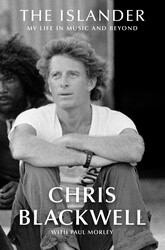
It might seem crabby to carp about some shortcomings in a pretty good book, but it’s frustrating that some art rock groups —particularly King Crimson, Jethro Tull, and Emerson, Lake, and Palmer—that had huge success for Island in the late 1960s and early 1970s, and were presumably key to building the company’s strength, are barely mentioned. Some pretty interesting cult artists from their vintage years, like Nico and Kevin Ayers, are also barely mentioned, and while he gives brief high praise to Marianne Faithfull’s comeback on Island, you’d think there’d be more to say about that than just a few sentences. Meanwhile Grace Jones gets most of a chapter, and it’s not one of the more interesting ones. If the thinking of the author and/or publisher was that it would be excessive to expand the book by one or two hundred pages, that’s a mistaken line of reasoning for fans such as myself, and I think there a quite a few.
There are also a few inaccuracies that demonstrate these books aren’t always copyedited by people with deep knowledge of popular music history. Peter Grant’s referred to as making the leap from driving visiting American rock’n’roll stars around the UK in 1963 to managing the Jeff Beck Group and Stone the Crows a year later on the way to managing the Yardbirds. But the Jeff Beck Group and Stone the Crows didn’t even get together until a few years after 1964, and it would be a pretty neat trick to manage Stone the Crows on the way to managing the Yardbirds, since Stone the Crows didn’t start until 1969, and the Yardbirds broke up in 1968. You don’t need to know anything about music to realize that Millie Small couldn’t have been fifteen when Blackwell arranged for permission to bring her from Jamaica to England, since it’s written that she was born in 1946, and the letter of parental permission, reprinted in the book, is dated March 12, 1963. Later in the book she’s referred to as dying in May 2020 at the age of 72. Is it so hard to do the correct math?
4. A Song for Everyone The Story of Creedence Clearwater Revival, by John Lingan (Hachette). Although there have been a few previous books on CCR, this is the first one to tell the story thoroughly and well. It’s not ideal, as the author too often ties in commentary about what was generally going on in the world and counterculture during their lifespan. But the bulk of the text is devoted to CCR’s career, going from their lengthy origins as the Blue Velvets and the Golliwogs, with a lot of coverage of their 1968-1972 peak. The heart of the research is based on extensive interviews with bassist Stu Cook and drummer Doug Clifford (though John Fogerty did not participate), and there’s a lot of inside detail into the band’s evolution and considerable highs and lows. The story is told without quotes from Lingan’s first-hand interviews, and while I favor the approach that uses direct quotes rather than telling the story as a narrative without them, it works okay here.
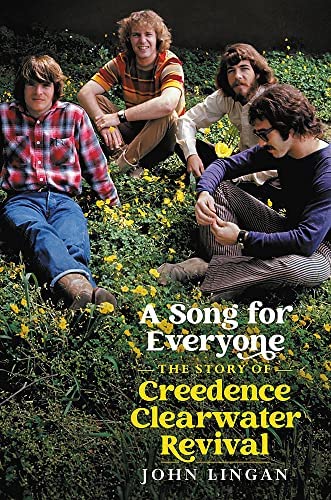
The group’s improbable transformation from also-ran, undistinguished regional band to superstars is explained with plenty of passionate analysis of their recordings, Fogerty’s songwriting, and their fraught relationship with Fantasy Records. Naturally much of this dwells on Fogerty’s creative process as he wrote virtually all of their original material, besides being lead guitarist, lead singer, and the most responsible for how their studio tracks were cut. The crucial point of his ascendance to dominance of the band seems to be when he overdubbed the backing vocals for “Proud Mary” without their presence, explaining to the others right afterward that he was going to be controlling almost everything other than playing rhythm guitar, bass, and drums from that point onward. Despite their phenomenal success in 1969-1971, they didn’t seem too happy (Fogerty included), and their painful breakup is explicated at length. Appropriately, there isn’t too much about their post-CCR work, though Fogerty’s battles with Saul Zaentz of Fantasy Records merited a bit more space. But you can read about those in Fogerty’s Fortunate Son memoir, which also gives his forceful point of view of his role in CCR’s history.
5. This Bell Still Rings: My Life of Defiance and Song, by Barbara Dane (Heyday). Now in her mid-nineties, Dane has had an incredible career, even if she’s never been too famous or approached having anything like a hit record, whether singing folk (the style she’s most identified with), blues, or jazz. Her 450-page memoir is rich with detail about her career and life, stretching back to the first stirrings of the folk revival in the early 1950s. To a greater degree than almost any performer of note, her life and art has been entwined with leftist politics, her recording and performing career likely suffering commercially as the result of the many stands she took. She’s not regretful about this, recounting her at times wildly up and down experiences in the record business, the performing circuit, and activist organizations with candor and occasional humorous zings. It’s both thoughtful and entertaining, and goes by faster than you might expect, as there are so many chapters there are a fair number of beginning-end pages with a lot of white space.
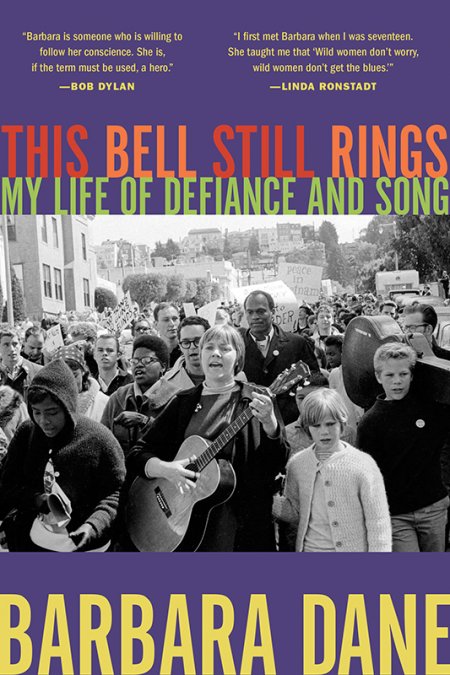
There are a lot of areas covered here, and her recordings aren’t neglected, with her stints at various indie labels from tiny to sizable noted, all the way up to her one major label LP (for Capitol) in the early 1960s. There are associations, from fleeting to tight, with a host of famous figures, ranging from Bob Dylan and Pete Seeger to less predictable ones like the Chambers Brothers and future Frank Zappa/Linda Ronstadt manager Herbie Cohen. There are inside stories about some of the most celebrated folk clubs, like the Ash Grove in Los Angeles, and rather tireless international travels, often to places rarely visited by Western performers, especially Cuba, but also the likes of the former East Berlin and Soviet Union.
There were obstacles thrown into her path by the government, which made it more difficult for her to travel abroad and spread her music and speak about her politics, and more surprisingly the Communist Party, who threw her out in the 1950s on spurious charges. Even more surprisingly, she discovered many years later that her first husband, Rolf Cahn—himself a figure in the folk scene—had informed on her to the FBI, though with little apparent consequence. She admits to some mistakes and regrets in both her professional and personal lives, particularly balancing commitments to her family with the need to constantly be on the road promoting her music and politics. In her early career, however, that was necessary just to survive with a growing family and no reliable income from her first two husbands.
The narrative does start to rush more and more after the 1960s, and at times I would have liked more detail on certain events, like the Paredon label she and her third husband, longtime Sing Out! editor Irwin Silber, founded in the early 1970s for non-mainstream international folk, often of a political bent. It’s disclosed that there are a fair amount of unreleased tracks she recorded for Capitol in the early 1960s and Arhoolie a few years later, and some more info, if known, about how that happened would have been interesting. Or, more on how she managed to record a folk album for a different label while signed to Capitol, a complication that’s only noted in passing.
It’s also mentioned in passing that the manuscript was cut in half, and while the whole thing would be too much for most readers, here’s a message to publishers in general: could it be considered to do deluxe editions of such books with all or most of the available text? That was done for Mark Lewisohn’s Tune In (the first of his planned massive three-volume Beatles discography), and there are at least two other music books I’ve liked where I know the original manuscript was at least twice as long. There are extended and superdeluxe editions for lots of music recordings, and that can be done for music books too.
6. Felix Cavaliere: Memoir of a Rascal, by Felix Cavaliere with Mitch Steinman (self-published). Since this is a self-published work (though easily orderable online), this has escaped much notice. I haven’t seen a single review, and wouldn’t have known of its existence if not for a passing mention in an online post about something else. While a figure like Cavaliere is deserving of more thorough proofreading and higher quality photo reproduction, for the most part it’s a decent, solid, and entertaining autobiography that properly focuses mostly on his time in the Rascals. It’s certainly better than the yet more obscure memoir a few years ago from another member of that band, guitarist Gene Cornish, that had far more of the pitfalls associated with self-published books.
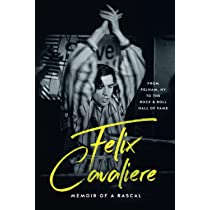
While many of the basic details of the Rascals’ career here will be familiar to serious fans of the group, Cavaliere relays them in a fresh storytelling manner that’s not embroidered with too many gratuitous thank-yous and bitter asides. There are stories of how he wrote or co-wrote numerous Rascals songs; their Atlantic Records recording sessions; and their efforts to help the cause of desegregation by insisting black acts share their bills. He generally has positive memories of the other Rascals, but does portray singer Eddie Brigati as a frequently difficult and contrary guy who held back their longevity, with some reservations about Dino Danelli’s commitment in their post-hits years. There are some unusual anecdotes that don’t make it into standard histories, like how “You Better Run” was written about a particular fraught affair he had, or how the other Rascals tried to do some recording (still unheard) without him when he took a brief vacation from the group in the late 1960s.
In common with many a memoir, the last sections are by far the least interesting, focusing on reunions and some repetitious sentiments about how blessed he’s been, how some opportunities were missed, and the awards he’s won. Some of the typos and mistakes that could have been easily eliminated with better proofing are frustrating if minor flaws in what is otherwise a worthwhile book. It shouldn’t take that much more time, for instance, to fix the spellings of “Marvin Gay” and “Barry Gordy” in the same paragraph, or avoid the embarrassment of noting an Otis Redding show at the Whisky a Go Go in 1968, the year after his death.
7. Wayward: Just Another Life to Live, by Vashti Bunyan (White Rabbit). Vashti Bunyan was briefly managed by Andrew Oldham in the mid-1960s and recorded a couple obscure mid-‘60s pop singles, including a song written by Mick Jagger and Keith Richards, “Some Things Just Stick in Your Mind,” that the Rolling Stones didn’t release in the 1960s. More famously, but not exactly famously, she put out an obscure Joe Boyd-produced 1970 mild folk-rock album, Just Another Diamond Day, with musical contributions from members of the Incredible String Band and Fairport Convention. The LP was rediscovered a few decades later and has gained a considerable cult following, leading Bunyan to reactivate her musical career and do a couple more albums. All this in itself would make for a pretty interesting story, but her early life was far more unusual than it was for most musicians with this kind of back story. In the late 1960s, she and her then-partner traveled by horse and wagon from London to the Outer Hebrides, the experience generating many of the songs that were written for Just Another Diamond Day.
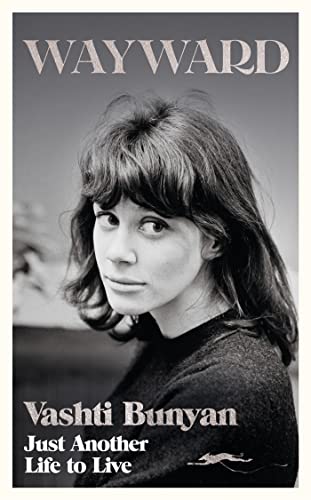
This memoir isn’t huge, but it doesn’t have to be bigger than it is. It properly focuses on her late-‘60s journey, with some coverage of her more poppish pre-1970 recordings and experiences with Oldham, as well as a final section on her comeback of sorts. Much like the singer’s music, it’s rather modest and self-effacing, but also forthright and entertaining. There are detailed stories of the numerous odd incidents and mishaps she had on her way from roughly the south to the north of Britain, as well as the unexpected kindnesses and hassles for being hippies that she suffered. In retrospect some of her and her partners’ decisions to live rough for so long might seem reckless and naive, but she acknowledges this. She also notes, without undue bitterness, how she was sometimes disrespectfully treated by her partner Robert Lewis. It’s a countercultural saga that’s difficult to imagine happening today, and while some fans might wish for more of a focus on her music, her songwriting and recording sessions are recounted in satisfying detail. So is her dissatisfaction with much of her work at the time, and her belated appreciation of it when she realized how much it meant to listeners she didn’t know she had.
8. On the Street I Met a Dog: An Autobiography and the Definitive Story of the Chesterfield Kings, by Greg Prevost, edited by Massimo del Pozzo (Misty Lane). Although perhaps not a name well known or known at all to many general rock fans, Prevost has been a mainstay of the garage revival scene since the late 1970s, usually as singer with the Chesterfield Kings. His lengthy memoir has a lot of interest to Chesterfield Kings fans, including meticulous details of their origins, tours, and recordings, down to track-by-track rundowns of many of these. But it should carry considerable interest even if you’re not a major fan of the group, as it’s stuffed with colorful anecdotes common to many a struggling underground act: the tour mishaps, shady promoters, recording deals that backfire, unsympathetic studio engineers, and more. In Prevost’s case, it was perhaps in some ways even more difficult than for the typical underground/indie act as he was diligently reviving styles out of sync with both contemporary and alternative trends, in particular the mid-‘60s garage rock he focused on (and often covered) with the Chesterfield Kings.
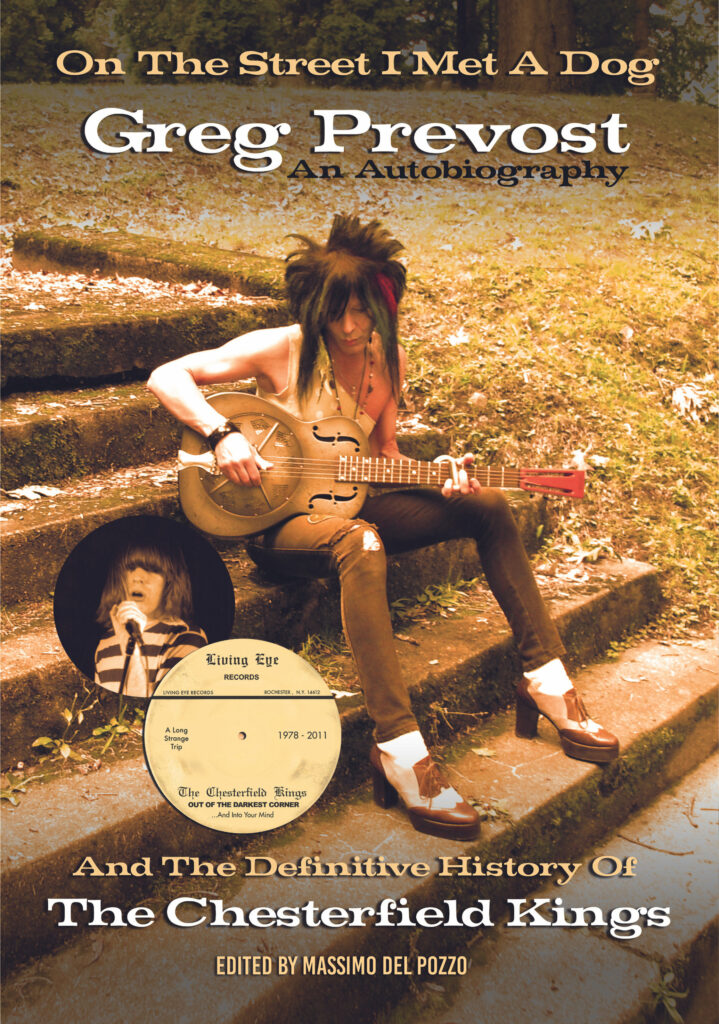
Prevost is also an archivist, historian, and writer of note, and while the book mostly covers his activities as a musician, there’s also coverage of his work as a noted fanzine publisher (of Outasite in particular) and manic collector. There are also encounters with an amazing roster of figures, not all of them the ‘60s garage rockers you’d expect, though some of them are here too, like Question Mark and Mark Lindsay. There are also meetings with Ray Davies, Graham Nash, Mick Taylor, and even (briefly) Mick Jagger that cast a somewhat different, and usually sympathetic, light on these superstars than usual. There are also some brief encounters that case big stars in an unflattering light (Elvis Costello, Joan Jett), and some interactions that are downright surprising (a double date including Lydia Koch, soon to rename herself Lydia Lunch).
Not all of this might entertain those not too deeply into his catalog, as there are sometimes microscopic details of recording sessions (including the obscure origins of the many songs he’s covered), tours, and even collecting vintage TV shows. But it’s a testament to the extraordinary perseverance needed to maintain a half-century or so career playing music more for love than for realistic hopes at stardom or even profit, though some brushes with major label interest and big-time media coverage made it seem momentarily possible. While critical at times of some of his associates, particularly as the Chesterfield Kings wound down and reached a cul-de-sac of sorts, he doesn’t spare himself in examining faults and failures. His recent more blues-oriented efforts as Greg Stackhouse Prevost are also discussed, leaving the impression of a man more at peace with his stubbornly uncommercial approaches than he was at times when he achieved wider recognition in his youth.
9. Zal! An Oral History of Zalman Yanovsky, by Simon Wordsworth (self-published, spoonful66@gmail.com). This nearly 300-page, large-sized paperback draws on interviews with more than 75 people who knew or were associated with the Lovin’ Spoonful guitarist. The quotes are connected by overviews of what was happening in his career and life for each chronologically sequenced chapter. This covers not only his time in the Lovin’ Spoonful, but also his pre-Spoonful groups the Halifax 3 + 1 and the Mugwumps; his obscure, not so great late-‘60s solo album; his brief time as guitarist in Kris Kristofferson’s band at the beginning of the 1970s; and assorted other miscellaneous musical projects. Those, however, were sparse after the early 1970s, Yanovsky devoting most of his final quarter century to running a restaurant in Kingston, Canada.

There’s a ton of information, usually relayed in a storytelling format, about this colorful fellow. The best parts, to no surprise, are those about the Spoonful, and there are plenty of those. Yanovsky does come across as someone whose over-the-top humor and pranks were not for everyone, or certainly could wear out their welcome. Sort of like Keith Moon, rather than being fun most of the time but hard to deal with the rest, it seems more like he could be fun some of the time and often hard to deal with, though he wasn’t as destructive or manic as Moon. There is a lot about his guitar work and the Spoonful’s records and concerts, and the controversial fallout from the drug bust of him and Spoonful bassist Steve Boone in 1966 is not overlooked. While descriptions of a lengthy interview (and he rarely discussed the Spoonful after the ‘60s) he gave Karl Baker in the 1990s lead you to believe it was somewhere between disappointment and disaster, actually the interview (reprinted in full near the end) is pretty good and informative.
As valuable as this is for serious Spoonful fans, the book could have benefited from some editing, and not just for the occasional misspellings and awkward grammar you find in many self-published volumes. There are quite a few “maybe it was funnier if you were there” stories, and repeated testaments to his good heart and zany humor, that could have been tightened up or dropped. There’s a lot of space for his time as a restaurant owner, cook, and Kingston citizen in his later years, and not everyone will be too interested in that era. There are many photos and memorabilia reproductions, quite a few rare, though some are printed in such small size that it’s difficult to make them out. These shortcomings shouldn’t seriously bother dedicated Lovin’ Spoonful fans, who will likely be willing to sift through the material for what they want to know. And there’s more coming, as the author and Baker are putting together a Lovin’ Spoonful “day by day” book.
10. The Who: Concert Memories from the Classic Years 1964-to-1976, by Edoardi Genzolini (Schiffer Publishing). The production values of this large-sized hardback might be more impressive than the contents, and this ranks as high as it does because of my avid interest in the Who, rather than the pure quality of the material. Still, it does collect many previously unpublished accounts of Who concerts, mostly from fans, though there are a few from people who knew and/or worked with the group. There are also many photos of them in concert, hotel rooms, or other locales, often taken by fans rather than professionals, and sometimes taken by the same fans who provide their memories. The eras are tied together by some basic historical overviews of various points of their career by the author.

The entries by those who saw the Who could have sometimes done with some editing, sometimes going off into rambling non-band-related tangents about the era or personal experiences of growing up during the times. There’s some repetition, between entries and within entries, of basic sentiments about how incredible they were in concert. But there are some good stories, including some specifics about instrument destruction at various shows, and a non-show-one where Sally Mann Romano remembers Keith Moon abandoning an expensive rented Porsche with the motor running in an empty intersection in Los Angeles traffic when he got impatient at a red light. Most remarkable, however, is how accessible the Who could be to fans determined to meet them offstage—not just in the pre-Tommy pre-superstar days, but on occasions well into the 1970s. Fans who managed to wangle their ways into backstage areas or hotel rooms were often welcomed, and they, especially Pete Townshend, could be generous with inviting them along to shows and sometimes giving free tickets.
Many of these photos are rare, but they run the gamut from top professional images to numerous blurry, out-of-focus and/or dark/poorly lit/distant amateur snaps. My favorite is certainly the one of an August 10, 1968 gig at the Jaguar Club in St. Charles, Illinois that shows Townshend swinging upside down from a pipe above the stage—during the show, not at a soundcheck or something like that—after smashing his guitar on the pipe. There aren’t many pre-1968 entries and overall they’re heavily tilted toward US shows. It’s a book that will primarily be valued by serious Who fans, but there are many of those, and they’ll get a lot out of the pictures and words, though there are numerous better Who books with a wider scope.
11. What Was the First Rock’n’Roll Record?, by Jim Dawson and Steve Propes (Genius Music Books). In 1992, the first edition of this valuable book had entries for fifty singles issued between 1944 and 1956, discussing in depth how each of them led to rock’n’roll, ending with actual rock’n’roll classics by Chuck Berry, Little Richard, Carl Perkins, and Elvis Presley in 1955 and 1956. This updated and revised thirtieth anniversary edition adds some corrections, clarifications, and additional material. It’s hard to tell how much bigger it is since the layouts of the editions are different, but there’s definitely more text. If the bulk if it hadn’t been previously published, it would occupy a much higher position on this list.
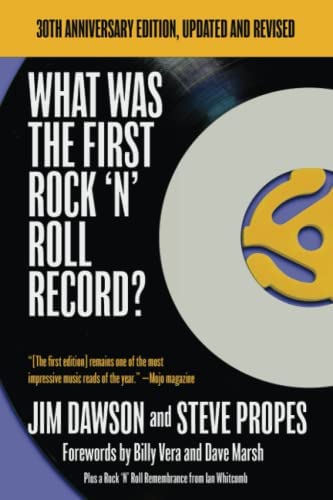
Whether you read it for the first time now or are a completist making sure you have the new edition, this is essential for its fluidly stated, heavily researched descriptions and analyses of these fifty singles, many of them pretty famous, some quite obscure, even if they were R&B or country hits in their day. Seminal discs by the likes of Bill Haley, Joe Turner, the Drifters, Fats Domino, Muddy Waters, and the like are here. Chart positions and notes about what records influenced them (and which records it went on to influence) and cover versions supplement the detailed histories of how the records were made. But there are also numerous less celebrated records and artists by the likes of Arkie Shibley (“Hot Rod Race”) and Stick McGhee (“Drinkin’ Wine Spo-Dee-O-Dee”), as well as key one-shots by groups like the Crows, Chords, and Penguins. Of course there are arguments to be made for many classic tracks that could have been included, like Haley’s “Crazy Man Crazy” or Presley’s “Mystery Train,” though if a list has to be limited to fifty, it’s inevitable it can’t cover everything. It makes one wish the authors would do a second volume covering fifty other singles that didn’t make it, though as almost all of the artists and their associates are gone, that would make first-hand research much more difficult.
12. Stunt Rocker: The Many Adventures of Andy Ellison, by Andy Ellison (Wintergarden). He’s not a household name, but singer Andy Ellison has a considerable cult following for fronting 1960s British mod band John’s Children, and then Jet and Radio Stars in the 1970s. His 200-page memoir has a chatty diary sort of feel, though it doesn’t suffer for that, as he’s a pretty good storyteller. The stories are usually pretty good, too, though they emphasize the daredevil leaps and pranks he did onstage, which caused him many injuries, some quite serious, over his nearly six-decade career. Generally he and his bands were more interested in causing mayhem than anything else, not just onstage, but on endless if entertaining mishaps they went through (some of their own making) on tour, and even in school and on holiday. They must have had a considerable amount of charm to get away with what they did, and also to get managers and record deals, some of them high-profile, like Simon Napier-Bell, who was managing the Yardbirds when he took on John’s Children. Marc Bolan’s brief and tumultuous time in John’s Children is discussed, as are Ellison’s brushes with numerous famous stars, including the Who, John Lennon, Paul McCartney, and David Bowie. There are also unsurprising but amusing conflicts with record labels, and plenty of odd jobs Ellison took to keep going between bands.
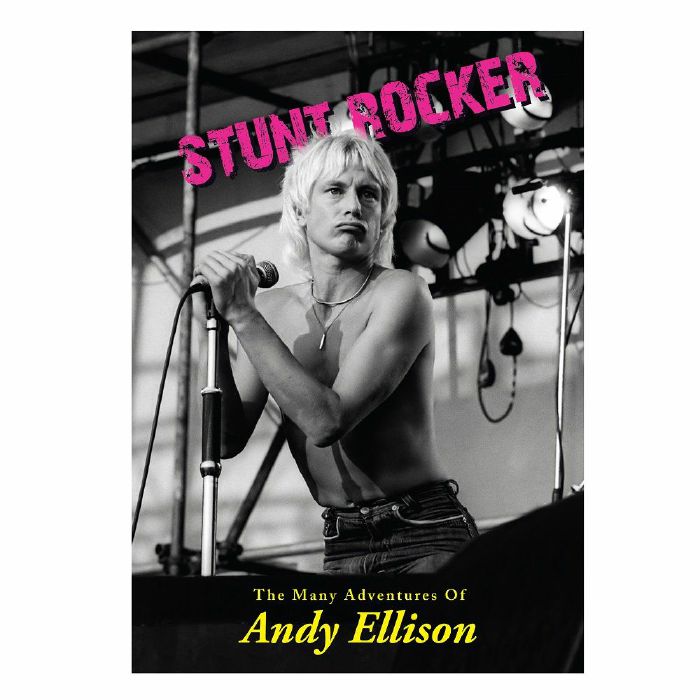
How’s the music fit into all of this? Well, sometimes it feels wedged between the emergencies, confiscated equipment, and staying one step ahead of the authorities. But it’s there, Ellison discussing the writing and recording of some of the more notable records he was involved with, like John’s Children’s “Desdemona” (with Bolan), and some obscure ones, like his wistful 1967 single “It’s Been a Long Time,” used in the film Here We Go Round the Mulberry Bush. The idiosyncrasies of his numerous bandmates over the years get space too, and he expresses regret over the firing of original John’s Children guitarist Geoff McClelland, forced out of the band at Napier-Bell’s instigation to make room for Bolan. I wouldn’t have minded more about the music and records, though you can read some more specific comments about his ‘60s discs in his liner notes to John’s Children’s A Strange Affair comp.
Like so many such memoirs, the last sections rush through the last few decades and various reunion shows and tours, and there are good and often rare photos throughout the book. There’s also a good share of jumbled chronology, like Ellison meeting Lennon at Apple’s headquarters on Savile Row before he comes across him when the Beatles are working on Magical Mystery Tour, which was broadcast before the group moved into Apple. More innocuously, he remembers mailing a copy of the Rolling Stones’ Sticky Fingers with pot and LSD sealed inside to Spain in July 1970, almost a year before the LP was released. This won’t bother too many readers or seriously impede the fun, but is another testament to how these small-run books could benefit from some outside proofing by knowledgeable fans.
13. Some New Kind of Kick: A Memoir, by Kid Congo Powers with Chris Campion (Hachette). Although his name isn’t well known to the general public, Powers is fairly famous in the rock underground as a guitarist who did stints with the Gun Club, the Cramps, and Nick Cave’s Bad Seeds. If a bit uneven, his memoir is pretty good, covering his time in all of those groups in some depth, though there’s considerably more space given to the Gun Club, particularly how he learned guitar and developed a style from scratch with encouragement from Gun Club singer Jeffrey Lee Pierce. He also writes a lot about his pre-pro years growing up as a Latinx gay misfit in Los Angeles, and though numerous memoirs follow a similar trajectory of finding identity through punk and new wave as a teen, he tells it in a more interesting and humorous way than the norm. A good number of his mishaps crossed the line from typical teen high jinx to obnoxious and even dangerous incidents, and while there might be some more detail about them than necessary, they are relayed without much pride or guilt.
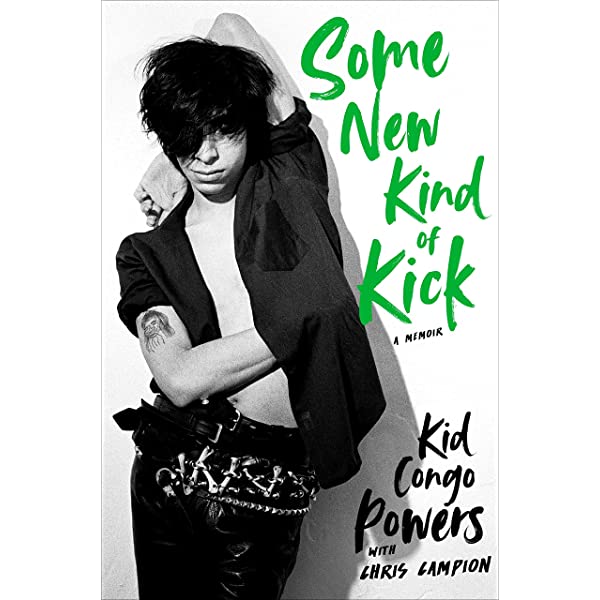
Fans of the Gun Club, Cramps, and to a lesser degree the Bad Seeds will find a lot about their music and peculiar inner dynamics. Being in the Cramps, for instance, was a bit like being in a cult, and his time in the Bad Seeds came to an unceremonious end when Mick Harvey announced he was returning to guitar from bass. Jeffrey Lee Pierce comes off as a talented but volatile figure who was nearly impossible to put up with. But because his collaboration with Pierce meant so much to him artistically, Powers usually did, as associates of hard-to-abide behavior of talents sometimes do – even if Pierce wasn’t nearly as legendary as figures of the sort like Jim Morrison, Frank Zappa, or even Captain Beefheart. In the process, he came up with a guitar style that was, although some would consider it amateur given his lack of prior experience, distinct and individual. As in so many musical memoirs, Powers fell prey to addiction and relapse, his path through those fairly similar to what you’ll read in other autobiographies, though it doesn’t dominate the narrative as much as it does in some other such books.
14. Like a Rolling Stone, by Jann S. Wenner (Little, Brown). Two previous books on Wenner and/or Rolling Stone—Joe Hagan’s Sticky Fingers (2017) and, to a much fainter degree, Robert Draper’s Rolling Stone Magazine (1990)—portrayed an ego-driven publisher and editor. In Sticky Fingers in particular, Wenner comes off as pretty despicable. These books shouldn’t be discounted, but Wenner’s own huge 550-plus-page memoir has its merits and interest. The style is rather matter-of-fact, covering his life and career from his upbringing and co-founding of Rolling Stone in 1967 up to his and the magazine’s changes through 2020. Much of the text is broken into bites of one to several paragraphs, roving from incident to incident and observation to observation.
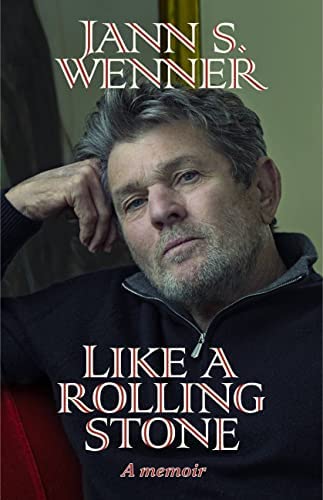
Wenner’s criticized by some purists for not liking music enough or even at all, but there is a lot of musical coverage here. Not all of it’s the same-old, either, as he discusses some topics not dealt with much in other sources, like the British edition of Rolling Stone in the late 1960s; his production of Boz Scaggs’s debut album, which in his account was far more involved than being a token presence; and, in a surprising brief political aside, the revelation that 1984 presidential candidate Alan Cranston asked if Wenner could do fundraising concerts for him where the money from ticket sales would go unreported (Wenner admits to saying yes). The book isn’t bereft of self-deprecating humor (though it’s not abundant), and he confesses that his rather infamous rave review of Bob Dylan’s Slow Train Coming “should have been sent back and cut in half.”
As expected, the most exciting parts of the book discuss the early San Francisco-based years of Rolling Stone, when the magazine was marking new territory in rock and then general journalism. It gets less exciting as the years roll on and Wenner gets less interested in music, and more in expanding a publishing empire that would also include US magazine. It’s a long way from putting Captain Beefheart on the cover in 1970 to getting excited, as Wenner does, about getting a scoop on Brad Pitt’s marriage to Angelina Jolie. Many of their more serious stories, music and otherwise, are detailed, though the constant references to the awards they won are unnecessary. Some of the less flattering footnotes to his journey are glossed over, like his putting his landmark early-‘70s interviews with John Lennon into book form against Lennon’s wishes (though he writes “I had the clear right to do so”), or not examined, like Garry Trudeau’s mildly satirical portrait of him in Doonesbury as “Yawn Wenner.” There are more stories of hobnobbing with pals Mick Jagger, Bruce Springsteen, Bono, and Bette Midler than most readers would likely wish, and the huge pile of short, oft-jet set-celeb-oriented anecdotes gets tiring by the volume’s later stages.
Time for mistakes that not many readers will care about: there are a few minor ones relating—surprisingly considering how well Wenner knew the Beatles’ catalog when he interviewed Lennon—to the Beatles, such as placing their final concert in 1965, and the recording of John Lennon/Plastic Ono Band in 1969. More annoyingly, he remembers buying the UK version of Revolver in London in the summer of 1966 when it “had been released in the UK but was not due out in the US for another two months.” Revolver was released almost simultaneously in the US (albeit missing three tracks from the UK version) and the UK in August 1966. Maybe the confusion arose from those three missing tracks having been released in the US two months earlier on Yesterday…and Today, though that’s hardly the same thing as Revolver coming out in the UK two months earlier. Alas, it doesn’t stop there; in the index, the entry for the album reads “Revolver (album; Rolling Stones).”
15. Wicked Game: The True Story of Guitarist James Calvin Wilsey, by Michael Goldberg (HoZac). Jimmy Wilsey is most famous for playing lead guitar on Chris Isaak’s early albums, particularly on Isaak’s early-1990s hit “Wicked Game.” Before that, he was bassist in the Avengers, San Francisco’s leading punk band in the late 1970s. That might not seem like enough to build a 416-page book around, but his life was pretty interesting, if tragic, as he died homeless in 2018 after about a quarter century of drifting through drug abuse, troubled relationships, and only sporadic musicmaking. This biography covers almost as much as that life as possible, including interviews with the other Avengers, other members of Isaak’s backing band Silvertone, girlfriends, and others dating back to his Midwest childhood.
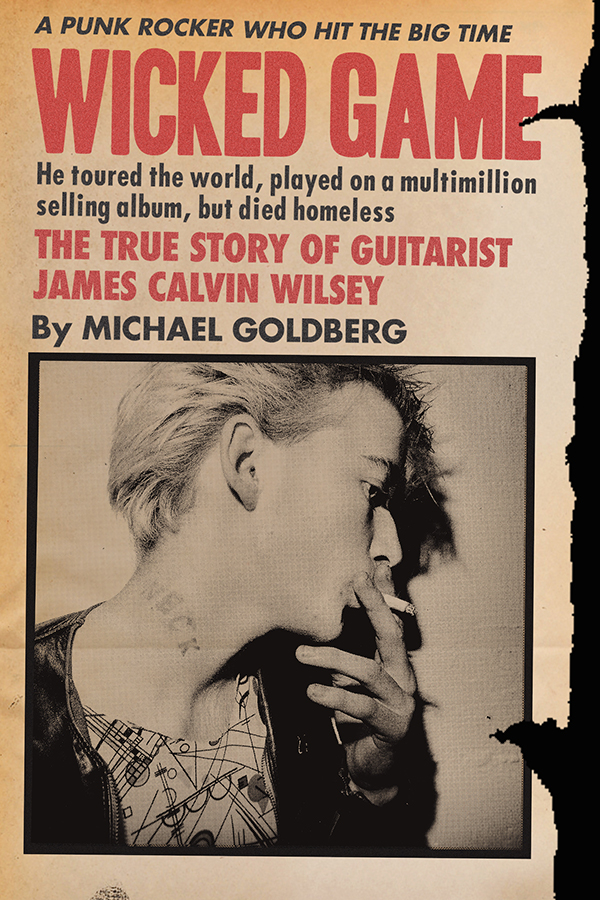
Although the depth of research is impressive, the text could have benefited from some pruning, with a good share of the comments reiterating basic facets of Wilsey’s sweet, good-natured character and how his addictions damaged his life and creativity. His music isn’t ignored, with detailed passages about his distinctive rockabilly-surf-influenced guitar work. Although they weren’t nearly as commercially successful as Isaak, the sections on the Avengers are extensive, with a lot of colorful context about the early San Francisco punk scene in which Wilsey became immersed. His rewarding but ultimately frustrating (particularly on the financial and credits sides) collaboration with Isaak is covered in depth, though Isaak himself and Wilsey’s wife were among the few notable figures not to grant interviews for this book. Wilsey’s descent into irresponsible addiction was longer than most, and it dominates the post-1990 chapters, making for even more prolonged decline than is usually featured in the many other rock books that end this way.
16. From Squeaky Clean to Dirty Water, by Larry Tamblyn (BearManor Media). Tamblyn was keyboardist in the Standells, most known for their classic garage rock hit “Dirty Water,” though they had a few other smaller hits and a respectable body of mid-‘60s recordings in the more accessible garage rock style. His memoir covers their career in detail, from their beginnings as a Los Angeles club band to their peak with a tougher sound in the mid-‘60s. There’s a lot about the big range of ups and downs of being on the road and navigating the rough waters of the Hollywood record business, including a good share of touring mishaps and affairs with admirers. There are also anecdotes, if sometimes short ones, of artists they met and played with, such as the Rolling Stones and the Yardbirds, and even of briefly meeting Syd Barrett (“who seemed to be spaced out, not unlike our own Dick Dodd at the time”).
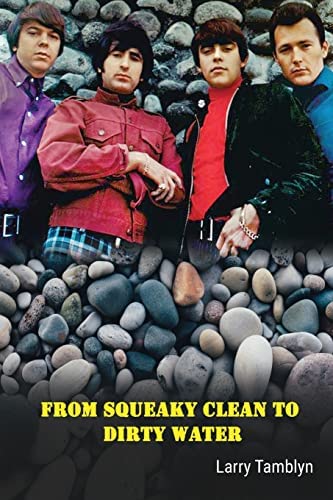
The best sections, however, are those that go over their mid-‘60s prime, including pretty in-depth memories of their most well known recordings, produced and sometimes written (as “Dirty Water” was) by Ed Cobb. If you, like many viewers, first saw them (whether at the time or on reruns) when they guest starred in an episode of The Munsters, well, there’s more here on that experience than you’ll read anywhere. So’s some lowdown on their appearance (including performing the title song) in Riot on Sunset Strip. More obscurely, it’s not so widely known that Dewey Martin was on drums for a bit before Buffalo Springfield, and Lowell George briefly a Standell in the late ‘60s, as discussed in the book.
While it’s not uncommon in rock groups, it’s unfortunate that Tamblyn has had some major conflicts with band members over the years, on which he gives his lengthy perspectives. These were worse with guitarist Tony Valentino than any of the others, Larry feeling Tony angled for more attention and credit than he merited from around the mid-‘60s onward. He’s respectful of Valentino’s musical abilities, however, writing that he “may not have been the greatest guitarist, but he had a knack for coming up with the simplest most enduring guitar riffs.”
He’s also complimentary about drummer Dick Dodd’s value as a lead singer, though critical of Dodd’s decision to leave for a solo career (Dodd had actually left for a bit before “Dirty Water” hit, which is where Dewey Martin came in). Cobb comes in for both some praise and flack, Tamblyn expressing disappointment in some of his and Tower Records’ decisions (and the failure of “Try It” to gain more airplay owing to supposed controversial lyrics), although he projects his pride in lesser known tracks like “Someday You’ll Cry” and “Rari.” The group’s decline in popularity and tumultuous sporadic comebacks are covered in the final chapters, but the emphasis is rightly on their ‘60s prime.
17. Undercover: 500 Rolling Stones Cover Versions That You Must Hear!, by Peter Checksfield (self-published, www.peterchecksfield.com). This might be of limited interest to those who aren’t rather hardcore Rolling Stones fans, but that’s a pretty sizable niche, and this is the kind of book that such intense devotees will value. Checksfield details 500 cover versions—principally of compositions by Mick Jagger and Keith Richards, though some by Bill Wyman and the early group pseudonym Nanker-Phelge are also here—from 1964 to the present. Besides noting recording info for both the originals and covers and succinctly describing each cover, there are also interviews (if usually pretty brief) with 130 musicians involved in the cover versions. There are naturally some pretty famous interpretations detailed—the Who’s “The Last Time,” Marianne Faithfull’s “As Tears Go By,” the Flying Burrito Brothers’ “Wild Horses,” both Otis Redding and Devo’s “Satisfaction,” and Ike & Tina Turner’s “Honky Tonk Women” are just a few.
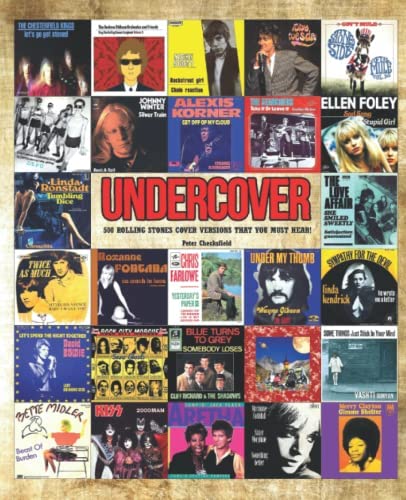
But the accent is on pretty obscure ones, and it’s doubtful anyone but Checksfield has heard all of these. As one of the most outstandingly rare examples, the Swinging Blue Jeans performed the early Jagger-Richards composition “So Much in Love” (never released by the Stones) on the BBC in 1965; it was only issued on a 2019 digital-only compilation, and even the Blue Jeans’ Ralph Ellis doesn’t remember doing it. Virtually all of the Stones’ originals from the ‘60s were covered at some point, and it took some digging to get them represented; the UK “Paint It Black” B-side “Long, Long While,” for instance, was done in 1968 by a Greek group, the Idols. The songs Jagger and Richards “gave away” in the mid-1960s without putting on Stones records are covered, and some of the musicians who did those are tracked down and interviewed, including some from mighty unknown outfits like the Toggery Five and West Five. While there aren’t many interview comments from the most famous figures who interpreted the Rolling Stones, there are a few, like Devo’s Gerard Casale going over his group’s “Satisfaction” in great detail, and Sandie Shaw discussing her 1969 rendition of “Sympathy for the Devil.”
Even narrowing down the list to 500 requires selectivity, and obsessive collectors might note the absence of a few covers that might have been worth including. To cite just one, it’s surprising Rotary Connection’s quasi-classical arrangement of “Lady Jane” (with Minnie Riperton on typically stratospherically high vocals) isn’t here, though a couple other Stones covers they did are. There are also a wealth of pretty obscure post-1970s covers that aren’t as interesting to read about as the earlier ones (particularly those from the ‘60s), though the interviews asking musicians about how and why these were recorded are okay. There are also basic black-and-white illustrations, mostly of artwork and labels from the cover recordings, and stills from filmed performances of some of the cover versions.
18. Chuck Berry: An American Life, by RJ Smith (Hachette). Besides being one of rock’n’roll’s top founding figures, Chuck Berry had an enormously complicated and often controversial personal life. Both are covered in this biography, which isn’t the first one of Berry, even if you don’t count Berry’s autobiography. Despite its heft, it’s not wholly satisfying, even if the writing is livelier in some ways than it is in the best Berry book, Bruce Pegg’s Brown-Eyed Handsome Man. There are numerous digressions into the context of Berry’s times and music, particularly his early years in St. Louis, some worthwhile, and some more like superfluous padding. Smith intelligently analyzes much of Berry’s music, and digs into some of his recording sessions, but hardly covers or fails to mention some of his classics at all, including “Memphis, Tennessee”; “Reelin’ and Rockin'”: “Little Queenie”; “Carol”; “Almost Grown”; “No Particular Place to Go”; and others.
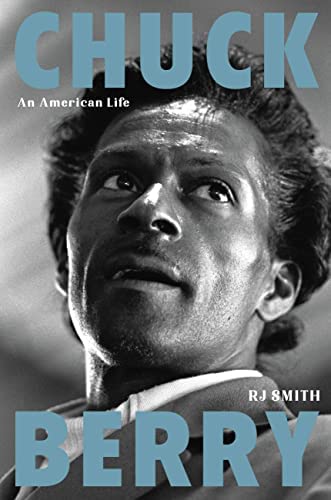
Although Smith did more than a hundred interviews for the project, many of the key figures (not just Berry himself) are gone, and some of the ones Smith does quote have peripheral or no connections with Chuck. Much attention is given to the most controversial activities that got him into trouble (particularly those that got him in jail in the early 1960s), and while those can’t be glossed over, some more weight on his music would have been preferable. Or more inside accounts, like good ones he does get from Steve Miller, whose band backed Berry in concert in 1967.
It’s too spotty to be definitive, though all Berry fans, of which there are many, will find much material to interest them in what’s covered, spanning his entire life. If you are a big fan, although you probably know this already, be aware that the documentation of his less admirable traits might make you feel like you know more about him than you wished. These include his oft-gross sexual fetishes, his mercurial insistence on using and sometimes tormenting scrappy pickup bands, and his generally unpredictably wayward manner of dealing with many social situations.
19. Lightning Striking, by Lenny Kaye (Ecco). Kaye, veteran rock writer most known for assembling Nuggets, and veteran guitarist most known for his longtime association with Patti Smith, picks “ten transformative moments in rock and roll” as the subject of this book’s chapters. These aren’t the kind of historical overviews that will uncover much material that’s unfamiliar to readers who know a lot about these junctures, whether it’s Memphis in the mid-1950s, Liverpool in the early 1960s, or London in 1977, up to Seattle in the early 1990s. Kaye does touch upon and colorfully detail/analyze many of the highlights, the essays’ value lying no much in the information (though there are some little known stories and facts) as his perceptions of how they signified and pushed through the evolution of new styles.
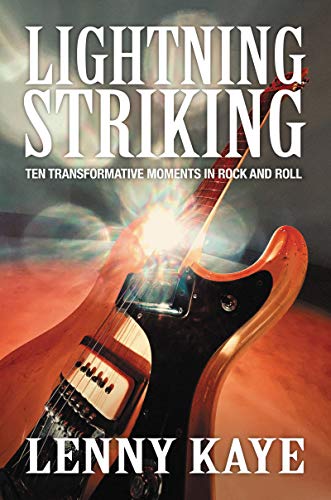
He also draws upon some of his own experiences as a young fan, aspiring musician, early rock critic, and guitarist in the Patti Smith Group, and these are the most interesting passages in the book, though they’re much less numerous than the straighter historical accounts/summaries. They’re especially to the fore, as you’d expect, in the chapter on New York in 1975, which has much coverage of how the Patti Smith Group formed and rose to fame; other memories of his time with Smith dot some of the later chapters, going up to a Seattle concert that got canceled at the onset of the 2020 pandemic. There’s some pithy humor and attention paid to bit players, as in this bit about a Frost album in the chapter on Detroit in the late 1960s: “There’s eleven minutes of the Animals’ ‘We Gotta Get Out of This Place,’ though they won’t be getting out of Detroit.”
20. Leonard Cohen: Untold Stories: From This Broken Hill, Volume 2, by Michael Posner (Simon & Schuster). Posner interviewed more than 500 people for a mammoth, three-volume Leonard Cohen oral history. This first volume, reviewed on my 2020 best-of list, covered his life until the end of 1970. This equally long (475 pages) book covers 1971 until the late 1980s, and is similar enough in structure and tone that I could almost reprint my review of volume one. The difference is that the era it deals with is somewhat less interesting, though it included some notable or at least notably odd projects, like the album he did with Phil Spector and the composition of “Hallelujah.”

Again the sheer volume of information and stories might at once impress serious fans and exhaust many readers. Although the music and records are given substantial coverage, there’s more room given to his serial and sometimes simultaneous affairs with women than anything else. Maybe some people feel that these are as interesting, or at any rate as important to Cohen’s story and character, as anything else he did. I’m not one of them. It gets to the point where you dread transitions on the order of “while he was still constantly seeing and bedding x and y, when he traveled here he also started a liaison with z.” Even more than many lengthy oral histories, there are contradictory accounts and interpretations of many incidents, as well as genuflections about what a genius Cohen was and how kind he could be on many occasions.
After making my mixed feelings clear, here’s one of the more interesting stories from the book, and one I don’t remember hearing or reading elsewhere. Eric Andersen says a friend of Cohen’s told him that Leonard came to her home, saw some of Andersen’s records, and broke them over his knee. In the very next quote, this is vehemently denied by that friend, Aviva Layton.
21. The Dylan Tapes, by Anthony Scaduto (University of Minnesota Press). Anthony Scaduto’s 1971 book Bob Dylan: An Intimate Biography was one of the first comprehensive biographies of a major figure in rock. Many subsequent books and much subsequent research has filled in tons of details he didn’t find, but it was an admirable job in establishing a foundation for what Dylan had done. This equally lengthy book has transcripts of interviews he did with a couple dozen of Dylan’s associates, ranging from his high school girlfriend Echo Holstrom to Dave Van Ronk, Ramblin’ Jack Elliott, Joan Baez, and John Hammond Sr., as well as conversations he had with Dylan himself after most of his research was done.

Like some similar books, this brings home how a finished product that selectively quotes from and contextualizes interviews is a better read than the relatively raw information. However, serious Dylan historians will appreciate being able to read the original interviews, although maybe not so much for additional facts as for insight into the personalities of some of these people from how they talk and react. There isn’t too much in the way of prime stuff that didn’t make the cut, though there are some such bits, like Elliott filling in more details as to how he ended up singing on the original 1964 outtake version of “Mr. Tambourine Man,” and why that wasn’t used; Carolyn Hester discussing the mixed effects of many folkies’ boycott of the Hootenanny TV show (due to the show’s refusal to book Pete Seeger), which she thinks cost the whole scene a lot of exposure; and Dylan telling Izzy Young that Peter Stampfel was one of his favorite singers. There’s also Eric von Schmidt dismissing Phil Ochs’s verdict of Highway 61 Revisited as the best album ever made with the words “Phil Ochs judging, you know, a total musical thing is, is like me judging, you know, a kind of tea-drinking contest. I don’t think Phil Ochs knows that much about music.”
It’s also interesting to see how much was still unknown about some basics of Dylan’s life and career only about ten years after he turned professional. Numerous interviewees get basic facts about what happened when wrong or don’t remember, even though only five to ten years had passed in most cases. Scaduto also missed talking to many figures who’d speak about Dylan in the 1960s in years to come, especially musicians and producers who worked with him after he moved from folk to rock. But Dylan scholars now have more to chew on with the publication of these transcripts, though Scaduto’s finished book remains of significantly greater value.
22. For the Records: Close Encounters with Pop Music, by Gene Sculatti (Swingin’ 60 Productions). As a rock journalist for about half a century, Sculatti’s most known for co-authoring the book San Francisco Nights: The Psychedelic Music Trip, 1965-1968, as well as presenting radio and Internet shows featuring music he loves. This slim semi-memoir is dedicated to very personal memories of records and music that were special to him, mostly from the 1950s and 1960s, though there’s some attention paid to later sounds. As a one-sitting reading it’s reasonably entertaining, if not full of information that will be unfamiliar to serious enthusiasts of early rock, though some rarities are discussed.
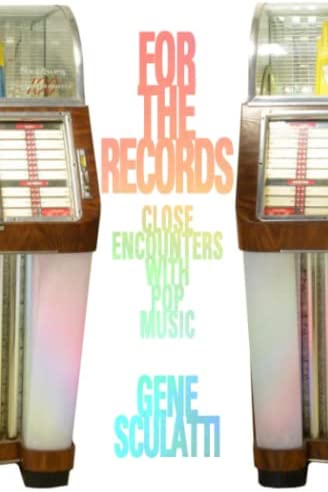
It’s dotted with some inside stories of experiencing the San Francisco scene, working in the rock biz as a writer and record company employee, and record collecting—he once came across twenty copies of the Grateful Dead’s rare debut 45 on the Scorpio label before it was fully realized how valuable it was, though only three of them were purchased. More often, however, he expresses appreciation for hearing the music, often dating back to his first experiences with certain bands and records. One observation that was crucial to elevating this to a place on this list was his remark that songs on the Beach Boys’ Friends album “wouldn’t have been out of place in Mister Rogers’ Neighborhood”—a comment bound to enrage many Beach Boys fans, but also one that’s pretty accurate.
23. Corporate Rock Sucks: The Rise & Fall of SST Records, by Jim Ruland (Hachette). In the late twentieth century, SST was one of the most prominent and downright ubiquitous independent labels, often but not always recording noisy rock with connections to punk and (less frequently) metal. This documents its rise and, well, not so much fall as near-disappearance in the twenty-first century. For an outfit that put out discs by Black Flag, the Minutemen, Hüsker Dü, the Meat Puppets, Screaming Trees, and (more briefly) Sonic Youth and Soundgarden, among others, there’s been some mystery about how it operated and fluctuated. It put out so much product that even 400 pages isn’t enough to fully detail the music it generated, and some acts who issued a lot (Leaving Trains) or little (Opal) on SST don’t get nearly as much attention as the aforementioned bands. But this gets a lot of the nuts and bolts (including Raymond Pettibone’s distinctive artwork on early SST releases) into print, drawing on both first-hand and archival interviews, although Greg Ginn, the most important figure as Black Flag guitarist and the chief force behind SST, did not make himself available.
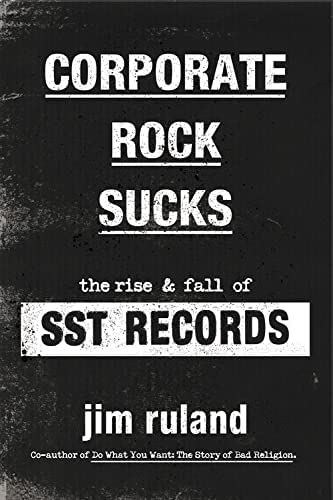
As anti-corporate as their ethos were (at least at the start), it’s not always an uplifting story. Mine is not a universally popular opinion, but the attitude the artists and music often espoused, at least in SST’s early years, could be wearisome in its constant aim to alienate audiences with music and confrontational behavior that pushed the boundaries of both volume and obnoxiousness. The label sometimes put out an absurd oversaturation of product—seven albums, unbelievably, by the unappealing and uncommercial (even by SST standards) Zoogz Rift in 1987 alone—much of it mediocre mixtures of punk and hard rock. That helped lead to some problems with acts being able to release their records in a timely manner, the label being able to get promptly paid by distributors, and the SST roster being able to get paid promptly or at all. Those issues aren’t unique to SST or to big independent labels. But combined with Ginn’s growing legal battles (particularly those involving experimental band Negativland, which are extensively detailed), SST shrank into a catalog outfit by the twenty-first century. Much of its catalog is out of print, and the author speculates this might be in part due to tapes getting damaged or lost, also advocating for the return of the music to the acts so that they can be restored to availability.
If it seems like a tale that doesn’t lend itself to humor, there’s some, although it’s often of the gallows variety. In a tribute to how laboriously Black Flag toured and helped build a circuit for SST bands to play, Ruland describes Ellensburg, Washington (home of Screaming Trees) as “a place so out of the way that Black Flag had never played there.” After Chuck Dukowski (part of several SST acts, including Black Flag, as well as being heavily involved in the label’s operations) went into a long discourse in an interview with Flipside explaining how verbalizing thoughts was futile, the editor reminded him, “Unfortunately, we are a printed publication.” In an offhand acknowledgement of SST’s significance and prolific discography, Screaming Trees Mark Lanegan noted, “We loved everything on SST. We listened to all those records—even Tom Troccoli’s Dog.”
24. Jimi, by Janie Hendrix and John McDermott (Chronicle Chroma). Certainly this well-produced coffee table volume would have rated higher had there not already been many Hendrix books, including some by co-author McDermott, who’s generally done the best of these. This is more like an overview to coincide with Hendrix’s eightieth birthday, without much material that will be new to big fans. While the basic historical text is fine, it functions mostly as a complement to the many images. Those are dominated by photos of Hendrix onstage and offstage, interspersed with some memorabilia like concert posters, advertisements, tickets, some unattributed vintage reviews, drawings, and handwritten lyrics. A good share of the pictures are rare or at least infrequently published, some dating from his pre-Experience days as a sideman. One surprise is an ad, apparently from early 1967, which bills a Sunday show as “roaring into 1967 with the new weirdo trio Jimi Hendrick’s Experience.” But this is more something for a casual fan, or to give to a youngster just getting into Hendrix, than for someone who’s already read a lot about him.
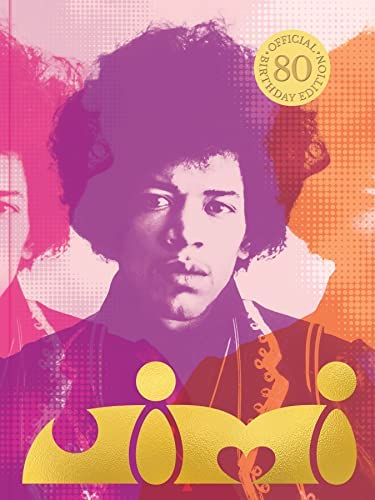
25. Rock on Film, by Fred Goodman (Running Press). There was another book titled Rock on Film back in 1982 that’s the best such work, although it naturally only covered films through the early 1980s. This is an entirely different book, and while it’s not nearly as comprehensive, it’s still a worthwhile if rather basic overview of a genre that’s spun off hundreds if not thousands of titles that could be considered rock on film. It has a few pages each on fifty rock documentaries, biopics, concert films, movies starring rock stars, and such from the mid-1950s to the present. There are also brief “double feature” sidebars in each chapter on rock films that are good complements to the ones in the longer essays. Those essays strike a decent balance between concise description and more in-depth, sometimes behind-the-scenes detail, with intelligent perspectives on their assets, flaws, and how they fit into the context of their times.
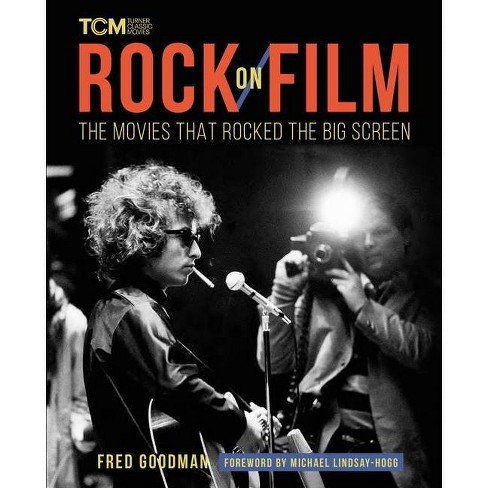
Most of the movies are pretty familiar, if generally worthy of selection. There aren’t many obscure titles, and every fan will find some notable films missing, whether famous ones like Help! or relatively little known ones such as Hardcore Logo and recent documentaries like Alison Ellwood’s Laurel Canyon (an entirely different movie from the fiction one of the same title from 2002 directed by Lisa Cholodenko, which is included). The author’s a little too generous toward biopics, but there’s some first-hand material via interviews with directors Cameron Crowe, Jim Jarmusch, Penelope Spheeris, Taylor Hackford, and John Waters. For many entries on lots of films that don’t make this book, the 1982 Rock on Film is recommended, as (less strongly) is Marshall Crenshaw’s 1994 book Hollywood Rock. While mostly accurate, there are a few factual mistakes in this one that should be corrected if there are subsequent printings, such as: Rock’n’Roll High School was released in 1979, not 1976.
26. Looking for the Magic: The Arista Records Story, by Mitchell Cohen (Trouser Press). What do Barry Manilow, Patti Smith, Graham Parker, Lou Reed, Gil Scott-Heron, Cecil Taylor, and Whitney Houston have in common? Well, they were all on Arista Records for at least part of the label’s first decade from around the mid-1970s to the mid-1980s, when Clive Davis started and ran the company after losing his job as a Columbia Records executive. Arista certainly put out some significant and even alternative, at times downright underground records. But really, it was a mainstream record company without as much of an identity as many other successful independents, from Atlantic and Elektra to Sun and Motown.
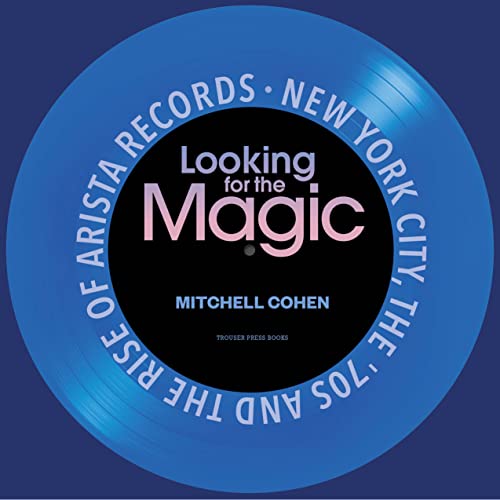
Cohen, who worked at Arista for much of this period, doesn’t spend more time than necessary drawing out this history in this slim but snappy overview. It helps that he doesn’t take Arista’s importance unduly seriously, with some pretty witty summaries of various hits and flops’ impact. On Reed’s Street Hassle, for instance: “The critical consensus was that it was Reed’s best album since whatever the critic thought his last best album was.” Besides some interesting stories on how the likes of Smith, Reed, and Parker were signed and marketed, there’s quite a bit of attention paid to artists and records that remain obscure, whether they had much quality or not, by the likes of Linda Lewis, Willie Nile, and David Forman.
There’s also quite a bit of space on Arista’s early ventures into jazz, which were about the most avant-garde of any sizable label of the period. How did Scott-Heron, Taylor, Henry Threadgill, Anthony Braxton, and the like end up with a pretty big company when they had no chance of making a big profit? It’s not entirely clear, except that some people at Arista had the chance to sign people they liked on the basis of their art and did so. Also covered are the label’s roots in Bell Records, with some tasty trivia such as a note about the saucy cover version of David Crosby’s “Triad” by actress Sally Kellerman (true!). Arista also organized some quality semi-forgotten reissues of vintage jazz and R&B by buying the Savoy catalog, promos of which gave them a chance to strengthen relationships with rock critics like Lester Bangs. Which is a lot more interesting than reading about Whitney Houston’s breakthrough, which ends a book spiced with numerous vintage Arista-related photos, ads, and record covers/labels.
27. Lifted, by Ringo Starr (Julien’s Auctions). Some major Beatles archival projects over the last few years have highly worthwhile, including the Get Back documentary, Paul McCartney’s The Lyrics book, and to varying degrees superdeluxe box set editions of their final albums. Like The Lyrics and those box sets, this 226-page coffee table photo-oriented book is expensive, but it isn’t nearly as valuable. Starr presents and (usually briefly) comments on photos from throughout the Beatles’ career, some of them uncommon, but a good number of them pretty familiar. As you’d expect, his comments are down-to-earth and radiate plaintive wisdom, making his affection for the other Beatles and pride in what they accomplished clear, though without disclosing surprising inside information.
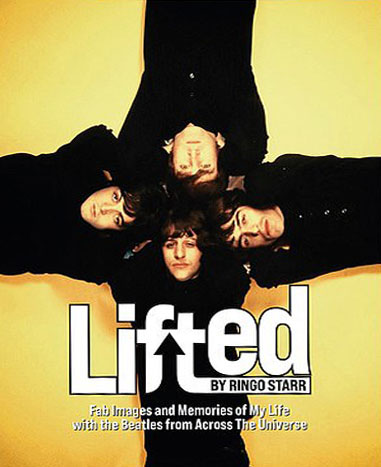
Maybe it’s too much to expect a detailed account along the lines of The Lyrics or (as a better but relatively overlooked source of recollections) Miles’s Paul McCartney: Many Years Ago. But considering this is $100 or so counting postage (and only available through Julien’s Auctions), some more text, or maybe some unpublished memorabilia if any more exists in Starr’s vaults, would have been welcome. Still, Ringo sometimes phrases things in a right-on manner that could only come from him, like his memories of how the Beatles’ grandiose plans for early 1969 concerts in exotic locations for the Let It Be film ended up with them just going up to the Apple roof: “We often began with big ideas, and then in the end, we got it down to the right idea.” And if the price tag makes you wince, take heart that at least the profits go to Starr and his wife’s charitable Lotus Foundation.
28. I’ll Be There: My Life with the Four Tops, by Duke Fakir with Kathleen McGhee Anderson (Omnibus Press). Duke Fakir wasn’t the most well known of the Four Tops; the late Levi Stubbs, their main lead singer, was. But he’s the only one left of a group that managed to stay together in its original lineup for more than forty years. His memoir is average at best, though it does cover the basics of their slow, decade-long rise from a club act that only put out sporadic records, through their 1960s peak at Motown and their post-Motown decline in recording popularity. There’s not as much detail on specific hit records as fans would like, though some, like “Baby I Need Your Loving,” “Reach Out (I’ll Be There),” and “Walk Away Renee” are discussed in reasonable depth. There’s a lot on faith, family, and good fortune that isn’t too stimulating, and some if not much coverage of the Tops’ problems with substance abuse and ill health, which aren’t too extreme by star standards. It’s a minor point, but it’s disappointing that their brief pre-Motown time at Columbia is just given a passing mention, considering their 1960 single for the label was produced by John Hammond.
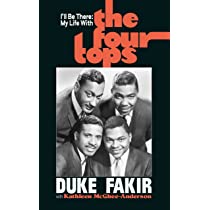
If this is something of primary interest to serious Motown fans, here are a few relatively little known items, according to these pages. Levi Stubbs was offered a solo career, but declined to stay with the Four Tops; he also turned down a starring role opposite Diana Ross in Lady Sings the Blues because there weren’t roles for the other guys in the band. The Four Tops originally thought of their signature song, “Reach Out (I’ll Be There),” as an album track and disagreed with Berry Gordy’s decision to make it a single, changing their minds when they heard how good it sounded on the radio. Eddie Kendricks of the Temptations sang Fakir’s tenor part on the hit “Bernadette” when Duke wasn’t feeling well. Fakir is half Asian-American, as his father was from Bangladesh. He remembers making plans to marry Mary Wilson of the Supremes in the mid-1960s before going back to the family he had with his first wife. The account of how Four Top Obie Benson helped Marvin Gaye write “What’s Going On” is also interesting.
But here are a few errors that should be noted, and even if they’re not central to the Four Tops’ saga, it’s surprising they slip through in a book from a publisher that’s put out many music history volumes. I’m not a jazz buff, but I know that when Fakir talks about the Four Tops seeing pianist Earl Garner, that should be Erroll Garner. More seriously, Fakir gives a couple pages to talking about how David Ruffin and Eddie Kendricks both left the Temptations in 1968 “at the same time.” That’s not correct. Ruffin did leave the Temptations that year, but Kendricks stayed with them until 1971, for a period that saw some of their biggest and best hits, including a #1 single Kendricks sang lead on in 1971, “Just My Imagination.”
29. Christmas Everyday! Glam Rock Albums 1970-1976, by Peter Checksfield (self-published, www.peterchecksfield.com). Although this 204-pager isn’t too extensive, it’s useful for those who want a basic reference guide to British glam rock of the 1970s. Most likely this is the only such guide. Two hundred albums are each given a page with a rating, track listing, basic discographical information, British chart positions, a list of TV broadcasts on which material was performed, and non-album A-sides recorded around the same time. The author also gives brief opinionated reviews of each record, and while the reviews could have been longer, they’re descriptive and not afraid to run counter to conventional wisdom – Roxy Music’s albums are not highly regarded, for instance. Who exactly qualifies as a British glam rocker is up for debate, but the selection is more inclusive than exclusive, allowing for the Move, Rolling Stones, Faces, 10cc, and others who might have been more of an influence on glam (or influenced by glam) than glam per se. Glam bedrocks like David Bowie and T. Rex are here, of course, as well as a good number of fairly obscure acts like Jet, Slack Alice, and the Winkies.
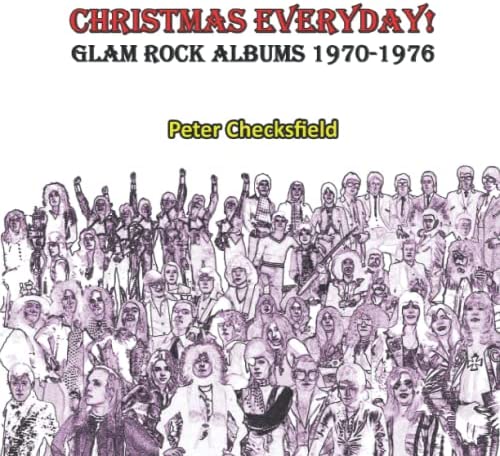
In 2022, the prolific Checksfield also put a 650-page large-sized paperback,Top of the Pops: The Punk & New Romantic Years 1976-1985. This lists every clip on every episode of the top British pop music program, along with the chart positions of the songs performed/played on the week the clips aired; thousands of stills from the clips; basic additional info about the performers; and a few first-hand stories from artists about being on the program. This doesn’t just focus on punk and new romantic music aired on Top of the Pops; it’s a reference book that lists everything. This isn’t my favorite era, but is worth knowing about for enthusiasts, though it’s too bad there aren’t more first-hand interview bits from performers, as those are the most interesting part of the book. One example is Andy Ellison of Radio Stars remembering how they were accidentally cued to play Wings’ “Mull of Kintyre,” and went into a “furious, impromptu, heavy punk version” until a producer demanded they stop.
30. The Jordanaires: The Story of the World’s Greatest Backup Vocal Group, as told by Gordon Stoker with Michael Kossner and Alan Stoker (Backbeat). The Jordanaires are most famous for singing backup vocals on many Elvis Presley records. But they also sang on records by more than two thousand other acts, including Ricky Nelson, Patsy Cline, Brenda Lee, and Clyde McPhatter, usually though not always recording in Nashville. This is a patchy kind-of-memoir, since it’s based around memories Stoker (who died in 2013) relayed at various points in his life. The text is filled in by some linking narrative by Kossner and other comments by relatives and associates, particularly Stoker’s son Alan. Their work with Elvis, as you’d expect, gets the most ink, and there are some good stories, like how they first heard him when “Mystery Train” came on the radio and immediately heard a link to the kind of gospel they had sung, or how they hated the vocals they did on “Hound Dog.” (On that score, they were outvoted by the public, who made it a huge deserved hit and have probably rarely noticed imperfections.) There’s also a lot about working with Patsy Cline, including details about a minor mistake on “She’s Got You” that again very few have noticed. There are also obscure historical anecdotes of interest here and there, like Buddy Holly’s plans to have them overdub vocals on a gospel album he was planning before his death, or how Nelson’s “Lonesome Town” originally had a beat and backup instruments before it became a ballad with just guitar and vocals.
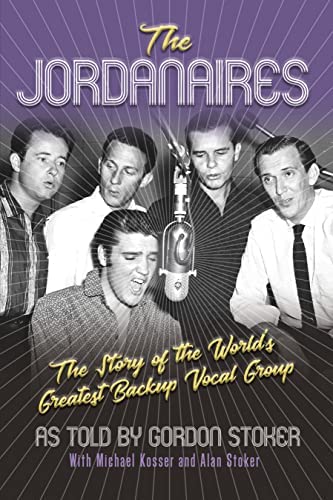
However, there’s a fair amount of repetitious testimonies to the abilities and good character of the Jordanaires and some of the legends they worked with that could have benefited from tighter editing. Gordon Stoker’s own observations have a good deal of the “I’ve been so blessed and fortunate” sentiments that are often found in such books. A fair number of major artists with whom they worked aren’t discussed at all; there’s little or nothing on records they sang on by Ringo Starr, Connie Francis, and Fats Domino, to give just a few examples. Maybe not much is remembered about those, considering they were so busy they treated their work as something like a regular job. But if you’re hoping, for instance, for insight into their vocals on an obscure but excellent record like the Blue Things’ mid-‘60s folk-rock single “I Must Be Doing Something Wrong,” you won’t find details here. The text sometimes rambles between topics and eras, and there are also quite a few quotes and stories—some interesting, some not so interesting—about the general Nashville studio scene rather than about the Jordanaires in particular. The book’s best treated as something to dip into for some specific stories about artists they worked with that are of particular interest to you.
31. Still Alright, by Kenny Loggins with Jason Turbow (Hachette). No, I’m not a Kenny Loggins fan. Still, like so many post-‘60s stars, he did some unlikely time in garage and psychedelic bands. He was briefly in the Electric Prunes (after the lineup that did their first three and best albums altered), and before that a teenage L.A. garage band, the Second Helping. That was enough to get me to check this out of the library, and actually Loggins does cover both of those stints with some detail, though not a huge amount. It turns out, for instance, that Leon Russell helped with the fuzztone guitar effect for the Second Helping’s best known recording, “Let Me In” (which has shown up on ‘60s garage compilations). There are a few pages on his time with the Electric Prunes, with an amusing abundance of near-disaster touring stories.
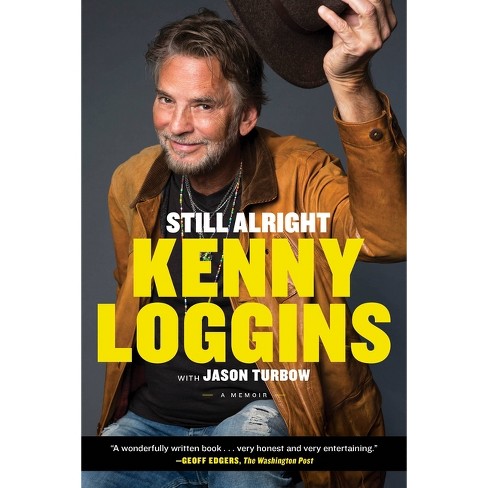
Of course, the bulk of the book is devoted to his stardom with Loggins and Messina and as a solo artist. I’m not very interested in those recordings, but the book itself is more interesting than you might think. There’s a fair amount of drugs and sex—not enough to rival many accounts from the era, of course, but more than you’d guess from his pretty clean-cut image. There’s also a lot about the weird and sometimes ruthless mechanics of the record industry in the ‘70s and ‘80s, told with more wit and less ego than expected. (He even describes one of Loggins and Messina’s biggest hits, “My Music,” as “a jaunty piece of crap” whose sax solo “sounds to me like a giant fuck-you to Jimmy, and probably to me, too.”)
There’s a lot about his mixed musical and personal relationship with Jim Messina, who could be much more controlling than Loggins liked, though Kenny constantly gives him a great deal of musical respect too. There are some of the drug problems, dives into new age-ish experiences, and family matters that are usually staples of rock star memoirs, but not so much that they’re overwhelming. For those who wish, there are also inside perspectives on some of his compositions and recordings. In the quality of the writing and the personable perspective, it’s above average for musician autobiographies, though certainly not for everyone whose tastes often drift beyond the mainstream.
The following books came out in 2021, but I didn’t read them until 2022:
1. A Pig’s Tale: The Underground Story of the Legendary Bootleg Record Label, by Ralph Sutherland & Harold Sherrick (Genius Music Books). The legendary bootleg label this documents is Trademark of Quality, one of the most prominent—if not the most prominent—such enterprises when rock bootlegs took off at the end of the 1960s through the mid-1970s. This 328-pager mixes text on the label’s story with many illustrations, which include the artwork for every one of their releases from 1969 to 1976. Also pictured are some of the original tapes and tape boxes used to source the music, as well as details for the tracks and where they were recorded, whether they were live performances or studio outtakes. Magazine and newspaper clippings covering early rock bootlegs are reproduced, and the label’s one venture into extensive liner notes—a seven-page interview with Yardbirds singer Keith Relf, for the Yardbirds bootleg More Golden Eggs—is, remarkably, reprinted in full, if in type so small it strains the eyes.
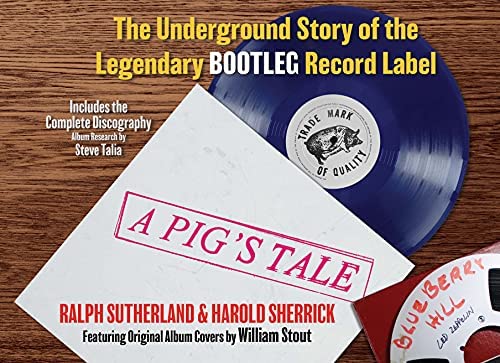
The text is the most interesting part, as it traces the history not just of this label, but of early rock bootlegging, which has generally been secretive and ill-documented. The TMOQ people started their operation with the first famous rock boot, Bob Dylan’s Great White Wonder, soon moving on to actually recording one of the other most famous early ones, the Rolling Stones’ Live’r Than You’ll Ever Be. The details of how some young guys with modest resources found the rare tapes, pressed and distributed the records, and soon graduated to secretly taping decent-fidelity concerts by big acts are pretty fascinating. It’s amazing how relatively easily they were able to smuggle fairly sophisticated recording equipment into big venues to record the likes of the Stones. Naturally these activities also got them pretty close to trouble with the law, leading to the imprint’s shutdown in the mid-1970s.
I could have done with more text with specifics about some of the productions, like how they got to interview Relf for Modern Golden Eggs, although that’s been covered elsewhere. The text, while pretty thorough and well written, sometimes has a fairytale tone, and obviously some pseudonyms are used for some of the people and places involved. It’s still a valuable book whose appearance would have seemed as unlikely fifty years after the label’s heyday as those Stones and Dylan bootlegs were when they first appeared in 1969.
2. Keep on Shining: A Guide Through the Music of Love & Arthur Lee, by William E. Spevack (WES). For its thoroughness, this 570-page volume can’t be faulted. It analyzes and describes every recording by Love and Lee in depth, and not just the Love albums from the 1960s and 1970s that are most familiar. It also includes his handful of more obscure pre-Love recordings; his sporadic and erratic, usually low-profile post-1970s releases; and, crucially, the many solo recordings by Bryan MacLean, even MacLean’s barely known Christian music releases. While it’s a reference book more than anything else, it’s more readable and entertaining than the usual such enterprises, with plenty of quotes from the band and their associates drawn from books, articles, liner notes, and interviews, some pretty hard to find. Like a lot (most?) small press/self-published volumes, this has its share of typos and grammatical lapses that could have benefited from editing, but they’re not nearly as egregious as they are in many such productions.

The author’s assessment of Love and Lee’s work can be very generous, particularly for his work after Love’s fine first three albums in the mid-1960s. It’s much more generous than mine, for instance, as I fall into the camp of those who find his post-Forever Changes material far inferior, and sometimes quite dull. Still, Spevack isn’t afraid to dole out criticism when merited, and does know his stuff well, though sometimes the language is overly precious. Love, Lee, and MacLean did put out a lot of material recorded after 1967, and it can be a slog to get through every last entry—though not as exhausting as it would be to actually listen to all of it. Take heart, however—a little more than 200 pages deal with pre-1969 recordings, which itself offers a lot to digest, even if it’s by far the most interesting section of the book.
3. Through the Prism: Untold Rock Stories from the Hipgnosis Archive, by Aubrey Powell (Thames & Hudson). With Storm Thorgerson (and later Peter Christopherson), Powell was part of the Hipgnosis design team that produced album covers and other artwork for numerous rock bands. They are, by far, most famous for the numerous Pink Floyd covers in which they were involved between the late 1960s and early 1970s. But they also designed covers for Wings, Genesis, 10cc, Led Zeppelin, and plenty of other acts, as well as eventually moving into film. Powell’s book isn’t a thorough from start-to-finish memoir, but covers a lot of the main bases of his experiences, primarily with Hipgnosis, from the time it started in the late 1960s. The accounts are usually focused on the stories behind their most famous LP sleeves—several by Pink Floyd (not just The Dark Side of the Moon), The Lamb Lies Down on Broadway, Venus and Mars, and Houses of the Holy—though covers by the likes of 10cc are noted too, as are projects like product design and videos.

Powell is a pretty good storyteller, and his accounts are spiced by numerous illustrations—not just album sleeves, but also photos from location shoots and various unused designs. Maybe some of the more obscure Hipgnosis sleeves could have been discussed, like the hideous one for Toe Fat’s Two. Then again, the most interesting stories tend to be the ones associated with the most famous covers, like the elaborate operation necessary to get the image of the pig and Battersea Power Station for Pink Floyd’s Animals, or the burning man (actually a stunt man) for the same group’s Wish You Were Here. For those interested in the mechanics of how these designs were done, he sometimes offers details like camera models, though these aren’t too abundant.
It is striking how extreme and fanciful the ideas of some of these rock stars were for their covers, and how heedless of some risks Hipgnosis was in getting them done, whether it meant hanging out of helicopters or transporting statues to the Alps. These sometimes involved a lot of money and environmental resources, and were sometimes altered or canceled at the whim of artists and their management. Are those days gone? They’re certainly not the same as they were in the late twentieth century, especially as Hipgnosis often insisted on photos of real scenarios and objects.
4. Chapel of Love: The Story of New Orleans Girl Group the Dixie Cups, by Rosa Hawkins and Steve Bergman (University Press of Mississippi). Hawkins was one of the three women in the Dixie Cups, who had the #1 hit “Chapel of Love” in 1964 and a few others in the mid-‘60s in their brief recording career. The reasons it was so brief are explained in this slim but worthwhile memoir, although the book’s padded by some general historical information about the times. In one respect, the Dixie Cups’ ascent to brief stardom is like a fairy tale, getting discovered by Joe Jones (who had a big early-‘60s hit with “You Talk Too Much”); getting whisked to New York to get a record deal with Red Bird Records, run by Jerry Leiber and Mike Stoller; working with top Brill Building songwriter/producers Jeff Barry and Ellie Greenwich; and getting a #1 hit within a few months. Unlike many stories from such figures, Hawkins does go into the recording sessions, record releases, and general process of working out the songs in some detail.
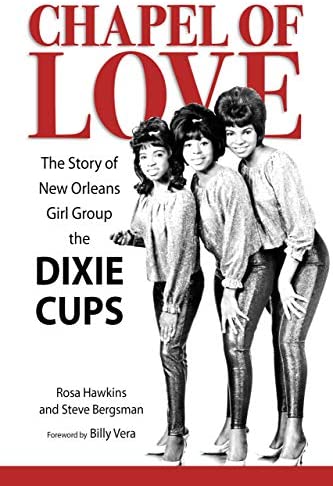
The flipside of this near-instant success is grim even by the standards of music business duplicity. Hawkins’s account portrays Jones as a villain on the order of Gary Glitter and Jimmy Savile. He not only, as she tells it, repeatedly ripped off their earnings in numerous ways, hassling their right to use the Dixie Cups name for decades beyond the 1960s. He also repeatedly raped Hawkins, as well as physically taking advantage of the one of the other singers in a later version of the Dixie Cups. He also got them off Red Bird to a brief deal with ABC Paramount that didn’t work out well, and Hawkins feels they didn’t get much of a chance to record because of Jones’s bad reputation. Admirably considering the circumstances, the story’s told in a calm manner, making room for some other interesting things the group went through, like their harrowing tour of Vietnam and their cross-country bus tours and interactions with other mid-‘60s stars.
5. Tenement Kid, by Bobby Gillespie (Third Man). To UK audiences, Gillespie needs no introduction. The longtime frontman of Primal Scream had numerous British hit records, and before that was drummer in Jesus & Mary Chain in the mid-1980s. In the US, Primal Scream never got more than a cult following, maybe accounting for why this didn’t come out Stateside until 2022, though it was published in the UK the previous year. His memoir covers his tough working-class upbringing in Glasgow through his approximately decade-long rise to British stardom with Primal Scream’s 1991 album Screamadelica. It’s a pretty straightahead account in which Gillespie makes no bones about his frequent excesses, whether confrontational behavior onstage or indulgence in drugs, particularly ecstasy as Primal Scream immersed themselves in the acid house scene. This is tempered by his championship of socialist values and the communal experience of the acid house crowd, though the tension between maintaining these passions with a hunger for rock and roll stardom isn’t often addressed.
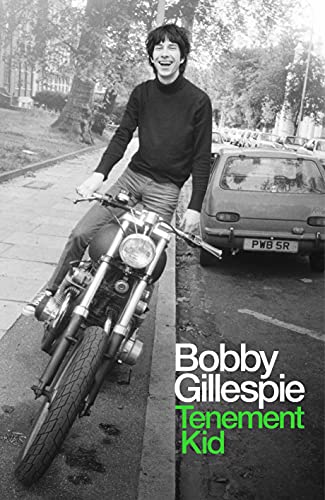
Aside from recounting his oft-volatile rides through Jesus and Mary Chain (where he was told he had to quit Primal Scream if he wanted to stay in the band) and Primal Scream, as well as his more obscure pre-JMC group the Wake, there’s a lot about the context that gave rise to musicians such as Gillespie. He was a big punk fan before performing, then getting into ‘60s garage and psychedelia, and then acid house, most of the while maintaining a passion for investigating other styles like soul. You kind of wonder how he found time to listen to all the records he was influenced by and incorporate them into what he was writing and recording. There are also insights into what it was like to be an act for the Creation label, whose chief honcho Alan McGee had been friends with Gillespie since their teenage years. For American audiences, even ones with knowledge of punk and post-punk from the time, he writes with zealous ardor about many bands and discs that were barely known in the US at the time, maybe even if you were constantly listening to college radio. His cockiness as to the innovations he saw Primal Scream making and joy in provoking audiences might verge on inflated self-importance to some readers, though as a writer he’s incisive and for the most part keeps your interest even if you’re not familiar with the ins and outs of his story or milieu.
6. Rock Concert, by Marc Myers (Grove Atlantic). Subtitled “an oral history as told by the artists, backstage insiders, and fans who were there,” this has accounts of performing and staging rock concerts from the early 1950s through the mid-1980s. That’s too big a subject to fully document in a 300-page book, and if you’re inclined to cite gaps like the relatively skimpy coverage of British and soul gigs, they’ll be plenty to pick on. It’s better to treat this as an episodic collection of memories and anecdotes, many by stars like Roger Waters and Alice Cooper, but also plenty from more behind-the-scenes promoters, stagehands, and concertgoers. Rock festivals in particular get a lot of space, but there’s also room for the earliest rock shows put together by Alan Freed in the early-to-mid-1950s, as well as the spectacle of Pink Floyd’s The Wall. There are also some thoughts on how rock transitioned to arenas and stadiums, though some of the nuts and bolts of how electronic ticketing developed and how shows with special effects were devised can be kind of dry.
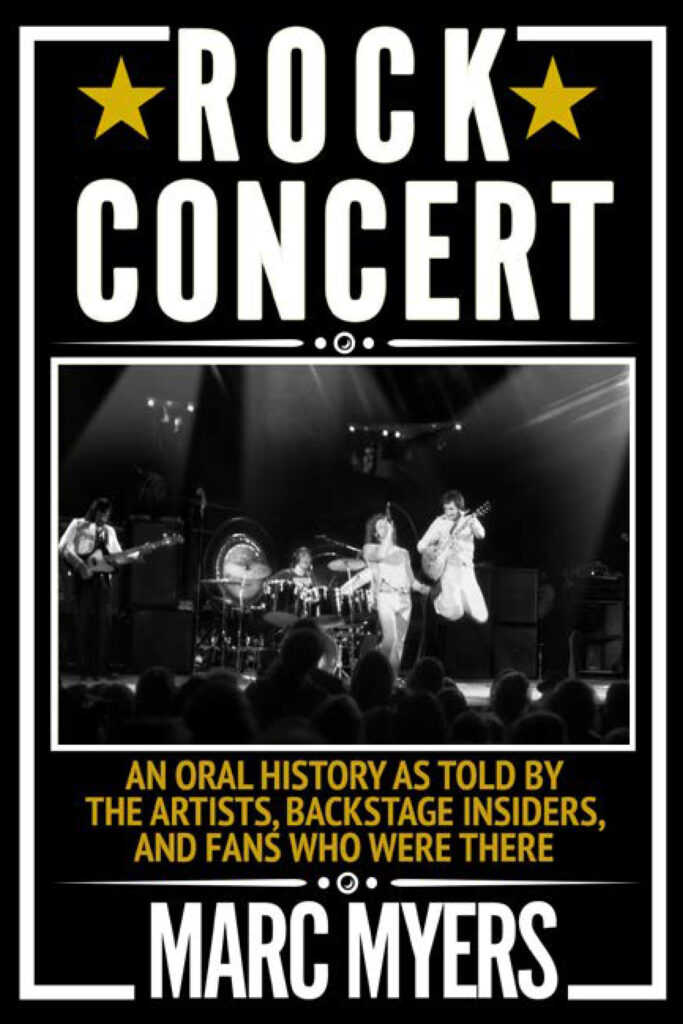
7. The Blues Dream of Billy Boy Arnold, by Billy Boy Arnold with Kim Field (University of Chicago Press). Chicago blues singer, songwriter, and harmonica player Arnold is most known for a batch of sides he cut for Vee-Jay in the mid-1950. In particular, he’s known for the original versions of “I Wish You Would” and “I Ain’t Got You,” both of which were covered for singles in 1964 by the Yardbirds when Eric Clapton was in the group. He’s also known for playing harmonica on Bo Diddley’s classic “I’m a Man,” one of the sides on Diddley’s first single in 1955. He didn’t record much in the two decades or so after that, unfortunate as that was the prime of electric Chicago blues and its crossover to R&B and rock. Still, he played a lot in the city and knew many of the Chicago blues, early rock’n’roll, and blues-rock greats, sometimes accompanying them on stage.Now in his mid-eighties, Arnold has a much sharper eye for detail than many musicians his age. His memoir is nonetheless uneven, if worthwhile for serious Chicago blues fans. Some parts ramble between subjects, and some are rather list-oriented as to things like who played at what club, or the basics on his numerous post-‘70s albums. The best sections are the detailed accounts of his early sessions on Vee-Jay and with Bo Diddley, but also his numerous comments on giants of the local scene and what is was like to meet and play with them. These include many key figures, like his early idol Sonny Boy Williamson (the first one), Muddy Waters, Howlin’ Wolf, Junior Wells, and Little Walter, as well as young ‘60s white blues guys like Paul Butterfield and Charlie Musselwhite. He also has interesting memories of the Chess and Vee-Jay labels, and, sadly unsurprisingly, not getting paid royalties, particularly for “I Wish You Would” and “I Ain’t Got You.” He offers more, and insightful, comments about the need to write and perform original material than many blues musicians do in interviews and books, though he didn’t get as much chance to record it in his younger days as he should have.
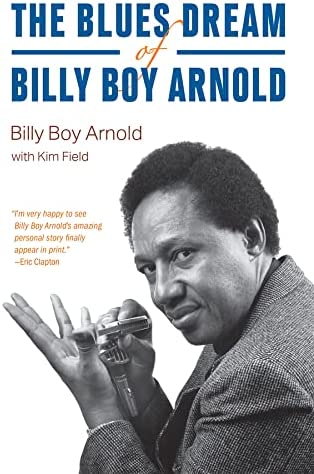
Also out this year, but not a music book: My book San Francisco: Portrait of a City, on Taschen Books:
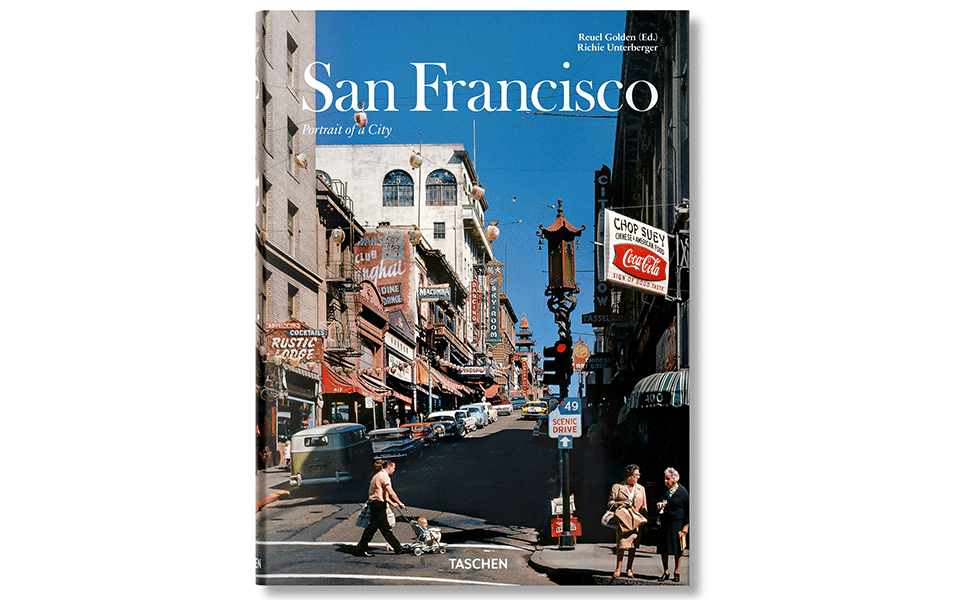
Also out this year (well, December 30, 2021), if I may be so shameless as to plug, is my book Pedal Culture: Guitar Effects Pedals as Cultural Artifacts (Backbeat Books) thoroughly documenting a 2017 exhibition of the same name I curated at San Francisco State University. I thank you for the space to promote.
I always enjoy reading this list, Richie!
Honoured to be included. Particularly glad you like ‘Undercover’!
All the best for 2023,
Peter C.
Anyone interested in a copy of Greg Prevost ‘ “On The Street I Met a Dog” please visit our website: http://www.mistylaneshoo.com.
The book is distributed in USA by Ugly Things webstore in San Diego CA and The House Of Guitars in Rochester NY.
Hi Richie. Are we to read between the lines as to why Bob Dylan’s “The Philosophy of Modern Song” isn’t on this list?
It’s not on the list because I didn’t like it enough to include it.
Hi Richie, Thanks so much for including my Wilsey book in your list. I really appreciate it. Did you get a copy of my other book, “Addicted To Noise: The Music Writings of Michael Goldberg”? If you didn’t and want a copy, please email me. Best, Michaels